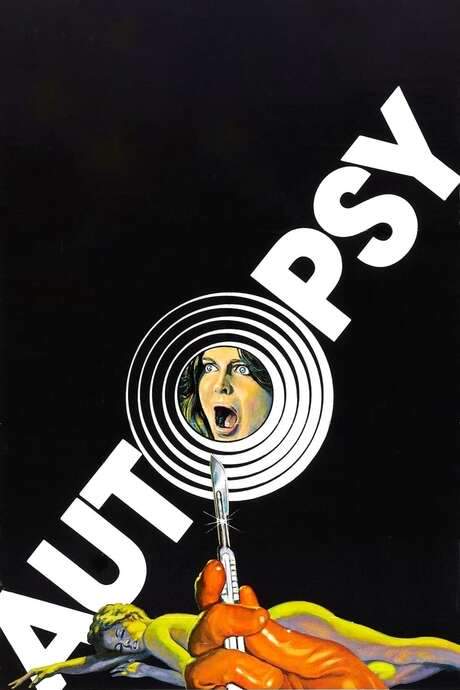
The Bloodstained Butterfly
Year: 1971
Runtime: 99 mins
Language: Italian
Director: Duccio Tessari
A young female student is brutally killed in a park during a thunderstorm. Numerous eyewitnesses spot TV sports star Alessandro Marchi fleeing, and the evidence against him seems damning. Yet the case feels oddly convenient, and when another murder occurs while Marchi is in custody, the investigation uncovers layers beyond the obvious.
Warning: spoilers below!
Haven’t seen The Bloodstained Butterfly yet? This summary contains major spoilers. Bookmark the page, watch the movie, and come back for the full breakdown. If you're ready, scroll on and relive the story!
The Bloodstained Butterfly (1971) – Full Plot Summary & Ending Explained
Read the complete plot breakdown of The Bloodstained Butterfly (1971), including all key story events, major twists, and the ending explained in detail. Discover what really happened—and what it all means.
On a rainy afternoon in a public park, a young Frenchwoman Françoise Pigaut meets a man in the drizzle, and what starts as a tense encounter quickly spirals into violence. The man gags her and stabs her to death with a switchblade, sending her tumbling down a hill where a little girl in a raincoat rushes off to fetch help. The scene sets a trail of fear and mystery that will pull several lives into its wake.
Alessandro Marchi, a TV sports host, is seen fleeing the scene and ends up arrested and taken to trial. The authorities quickly connect Françoise’s death to the man, and suspicion centers on Marchi as the possible assailant who groped Françoise—an assault that would have given her motive to threaten to report him. His daughter, Sarah Marchi, was a friend of Françoise, adding a personal edge to the case and intensifying the pressure on Marchi’s defense.
The case unfolds with courtroom drama as Marchi is convicted, and it’s revealed that his lawyer, Giulio Cordaro, deliberately held back a more aggressive defense in order to continue his affair with Marchi’s wife, Maria Maria Marchi. The revelation casts a new light on the trial and the choices that shaped its outcome, complicating the public perception of guilt and innocence.
Meanwhile, Giorgio(/actor/helmut-berger), a young pianist, enters the lives of Sarah and her circle, starting a relationship with her while also harboring personal discontent that he tries to drown in alcohol. The park becomes the scene of renewed horror as a prostitute is found murdered there, followed by a third slashing of a woman who is supervising two children. The killer’s methods echo Françoise’s death, but the police seem slow to connect the dots, even as a taunting caller to Inspector Berardi hints at a widening pattern of violence.
Back home, Maria discovers Giulio attempting to rape Sarah, and she promptly kicks him out, exposing deeper tensions within the Marchi household. A retrial brings Marta Marta Clerici into the narrative as Marchi’s supposed mistress; the court overturns his previous conviction and finds him innocent of Françoise’s murder, leading to his release and fueling a sense that the truth remains elusive.
With the retrial changing the public narrative, the investigation steers toward a new development: a store where the switchblades were purchased becomes a key clue, and the owner lists possible suspects. The case culminates in a confrontation in an abandoned building, where it’s revealed that Giorgio was the killer behind the final two murders, and that Françoise’s lover had a complex, hidden connection to the crime. As the police rush to intervene, Giorgio confesses that the last two killings were his, rooted in a belief that Marchi had murdered Françoise during their earlier encounter when Marchi fled the scene.
In a dramatic turn, Marchi ultimately confesses to Françoise’s murder, and Giorgio shoots him. When Giorgio checks for Marchi’s death, he is stabbed by Marchi, and, as Marchi attempts to escape, Giorgio shoots him dead. The confrontation ends with Giorgio dying from the stab wound, his final smile seeming to mock the fragile lines between guilt and vengeance, power and fate.
Last Updated: October 05, 2025 at 11:49
Unlock the Full Story of The Bloodstained Butterfly
Don't stop at just watching — explore The Bloodstained Butterfly in full detail. From the complete plot summary and scene-by-scene timeline to character breakdowns, thematic analysis, and a deep dive into the ending — every page helps you truly understand what The Bloodstained Butterfly is all about. Plus, discover what's next after the movie.
The Bloodstained Butterfly Timeline
Track the full timeline of The Bloodstained Butterfly with every major event arranged chronologically. Perfect for decoding non-linear storytelling, flashbacks, or parallel narratives with a clear scene-by-scene breakdown.

Similar Movies to The Bloodstained Butterfly
Discover movies like The Bloodstained Butterfly that share similar genres, themes, and storytelling elements. Whether you’re drawn to the atmosphere, character arcs, or plot structure, these curated recommendations will help you explore more films you’ll love.
Explore More About Movie The Bloodstained Butterfly
The Bloodstained Butterfly (1971) Scene-by-Scene Movie Timeline
The Bloodstained Butterfly (1971) Movie Characters, Themes & Settings
The Bloodstained Butterfly (1971) Spoiler-Free Summary & Key Flow
Movies Like The Bloodstained Butterfly – Similar Titles You’ll Enjoy
Tenebrae (1984) Spoiler-Packed Plot Recap
Bloody Moon (1981) Ending Explained & Film Insights
The Killer Is Still Among Us (1986) Story Summary & Characters
Blood and Lace (1971) Complete Plot Breakdown
A Bay of Blood (1971) Ending Explained & Film Insights
Autopsy (1975) Ending Explained & Film Insights
The Case of the Bloody Iris (1972) Detailed Story Recap
My Dear Killer (1972) Story Summary & Characters
Blood and Black Lace (1964) Ending Explained & Film Insights
Black Butterflies (1000) Movie Recap & Themes
The Killer Wore Gloves (1974) Ending Explained & Film Insights
Seven Blood-Stained Orchids (1972) Movie Recap & Themes
The Black Belly of the Tarantula (1971) Spoiler-Packed Plot Recap
Thirsty for Love: Sex and Murder (1972) Detailed Story Recap
Death Walks at Midnight (1972) Ending Explained & Film Insights

















